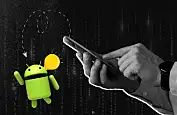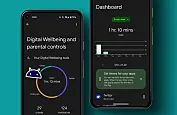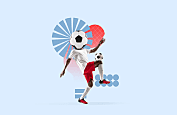
- What Is The Web of Things (WoT)?
- What Was The Need Of WoT?
- What Are The Benefits Of Web of Things (WoT)?
- Exploring The Building Blocks
- Exploring The Web of Things Architecture
- Use Cases And Applications Of Web of Things (WoT)
- Looking Into The Difference Between IoT And WoT
-
The Future Of The Web Of Things (WoT): What’s There To Come
- Increased Standardization Across Industries and Domains
- Enhanced Security
- Edge and Fog Computing
- Integration of AI and Machine Learning
- Low-Latency Networks with 5G
- Greater Cross-Domain Integration
- Energy Efficiency and Sustainability
- Consumer-Centric Applications
- Privacy and Data Ownership
- Cross-Device Orchestration
- Unlocking Tomorrow's Potential: The Web of Things (WoT)

The IoT revolution continues rapidly in today's growing digital transformation, from data-driven smart cities to intuitive houses that adapt to our requirements. We are on the verge of a revolutionary future in 2023 as IoT powers myriad commercial endeavors.
Between 2023 and 2027, an additional 311.9 million homes (+86.47%) were predicted to join the growing number of users in the worldwide smart home industry. Do you ever wonder how your home and fitness trackers' sensors are connected? The Web of Things (WoT) is a component, not just the internet.
The names "Internet of Things" and "Web of Things" are familiar to those just starting with cutting-edge technology. A fair amount of individuals are aware of them. The latter is still a young field, and few people are familiar with it.
Understanding the Web of Things in IoT is like seeing into the future of technology and its enormous effects on our lives at a time when our devices are becoming smarter and more linked every day.
Consider a situation where your home and car are electrically linked to adjust your thermostat to the perfect setting before you get home. Imagine easily exchanging data with your healthcare practitioner while managing your health in real time using a wearable device. Or imagine your refrigerator sending you a shopping list based on what's inside. This is the Web of Things in IoT in action, not science fiction.
But what is this WoT, and how does it build this network of connected products and services? The Web of Things will be extensively discussed in this essay, along with its intricacies and almost limitless potential.
Get ready for a world when everything—from your coffee maker to your car—becomes a node in the Web of Things, affecting technological advancement and changing how we live, work, and play.
This blog post will clear up any confusion and provide you with clear knowledge on Web of Things in IoT. Let's get going!
What Is The Web of Things (WoT)?
The Web of Things (WoT) is an emerging concept that extends the Internet of Things (IoT) by adding a layer of web technologies to make IoT devices and data more accessible and interoperable. To enable smooth communication and interaction between IoT devices and apps over the web, WoT attempts to establish a standardized and unified framework for them.
IoT devices are made web-accessible and can share their capabilities and data uniformly in WoT by installing web standards like HTTP and RESTful APIs. This method makes device integration easier and improves interoperability with different platforms and ecosystems. WoT in IoT encourages the accessibility, discoverability, and safe communication of devices, promoting an increasingly user-friendly and integrated IoT environment.
WoT uses web technology to build intelligent, networked systems that web browsers and applications can easily control and monitor, increasing the possibility for automation, data analysis, and creating a truly interconnected world.
What Was The Need Of WoT?

Well, we all know what is iot and how does it work. The Internet of Things (IoT) has undoubtedly made our lives easier, but more challenges come with more gadgets in our environment. A significant obstacle to the widespread adoption of IoT has been the challenges associated with connecting to and monitoring all of these devices.
You require ten mobile applications to connect to your ten IoT devices. You will have to switch from one app to another, which is inconvenient. Unfortunately, the majority of IoT devices experience this. As per the report of Gartner, the number of IoT-connected devices is estimated to increase to $43 billion by 2023.
The issue is that everything speaks a different "lingua franca"—there are hundreds! The IoT hasn't reached its full potential since most IoT protocols and standards are incompatible, which is the worst aspect.
Since it enables data transmission, connecting gadgets to the Internet and assigning them IP numbers is merely the first step toward the Internet of Things. It does not, however, ensure that the devices understand the meaning.
That’s why we need something like HTTP, a universal way to transfer data in text, images, sound, and other media elements so that devices communicate. The Web of Things – or WoT – fills this vacuum by using and adapting Web protocols to connect anything in the physical world and give it a presence on the World Wide Web!
The Web of Things (WoT) emerged to address several key needs and challenges in the Internet of Things (IoT) ecosystem:
| Challenges in IoT | Web of Things (WoT) Solutions |
| Interoperability | Introduces standardized web protocols to promote interoperability. |
| Accessibility | Increases user accessibility by simplifying device access via the web. |
| Security | Uses web security principles to prevent illegal access and breaches. |
| Scalability | Utilizes web technologies for effective scaling of Wot in IoT applications. |
| Ecosystem Development | Encourages the creation of an open and comprehensive IoT ecosystem. |
1. Interoperability
The internet of things (IoY) impact on app development is well known to us. It might be challenging to guarantee that IoT devices can function together effortlessly because they come from many manufacturers and employ multiple communication protocols. WoT introduces standardized web protocols to promote interoperability, enabling more efficient device communication and teamwork.
2. Accessibility
Traditional IoT devices frequently have difficult-to-use interfaces that make it difficult for non-experts to control and monitor them. By integrating web standards, WoT increases user accessibility by simplifying accessing and managing devices via web browsers and applications.
3. Security
IoT security is a major concern in terms of security. To improve the security of IoT devices and the data they generate, WoT uses well-established web security principles to prevent illegal access and data breaches.
4. Scalability
As IoT devices increase, scalable solutions are required. The use of web technologies by WoT makes it possible to scale IoT applications effectively while managing huge numbers of devices.
5. Ecosystem Development
WoT encourages the creation of an open and comprehensive IoT ecosystem. It makes it simpler to design, deploy, and integrate IoT applications and services by integrating IoT devices into the web. Several industries use the best and top 10 platforms to pick for IoT development.
What Are The Benefits Of Web of Things (WoT)?
A compelling platform for IoT (Internet of Things) applications, the Web of Things (WoT) offers appealing benefits. We'll further detail these advantages:
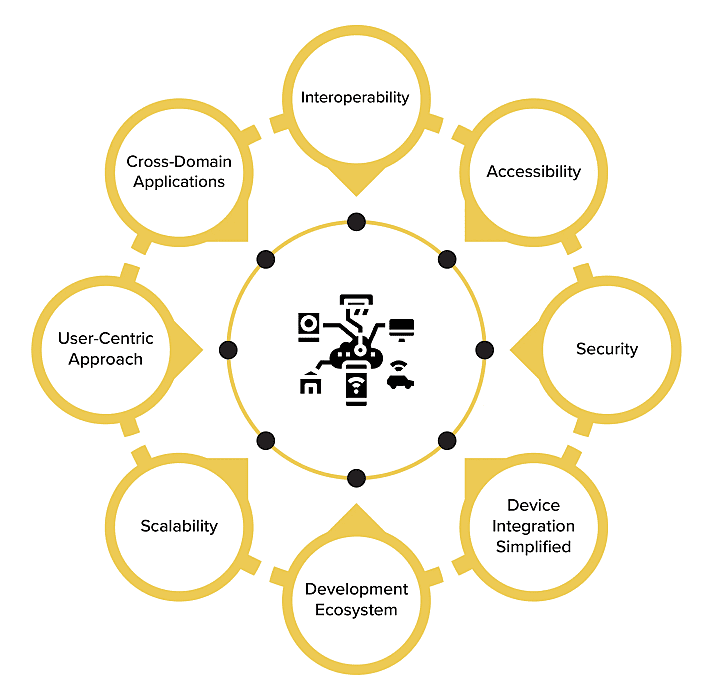
1. Interoperability
WoT improves interoperability by utilizing recognized web standards. IoT devices of any sort or manufacturer can connect using standard web protocols like HTTP and RESTful APIs. Interoperability lowers entry barriers and encourages interoperability between various platforms, making it easier to integrate devices and promoting the growth of a single IoT ecosystem.
2. Accessibility
WoT's accessibility is one of its main benefits. IoT devices are frequently controlled by specialized software or interfaces, which might be difficult for users to use. However, WoT makes accessing and managing devices possible using web browsers and common web interfaces. This improves user-friendliness and democratizes IoT technology by making it simpler for people to use IoT devices.
3. Security
WoT gains from well-known web security procedures that have developed over time to meet a variety of security concerns. These include strong authentication techniques and features like HTTPS for secure data transport. WoT strengthens the security of IoT devices and data by incorporating these principles, guarding against unwanted access, data breaches, and other online dangers.
4. Device Integration Simplified
In traditional IoT deployments, connecting devices to the internet or one another frequently requires specialized middleware or gateways. By directly integrating web technologies into IoT devices, WoT makes device integration easier. Expediting the development and deployment process lowers the complexity and expense of device integration.
5. Development Ecosystem
WoT allows a larger community of web developers to participate in IoT development. Using web standards and development tools that web developers are already accustomed to reduces the learning curve for creating IoT applications. This expansion of the developer ecosystem, which also accelerates the rate of innovation in the IoT industry, paves the way for creating a greater variety of applications and services.
6. Scalability
Scalability is crucial for IoT, especially given the constantly growing number of devices. With the help of WoT's implementation of web scalability principles, managing many devices and scaling IoT applications is simplified. This guarantees the system can manage an expanding volume of devices and data without noticeably degrading performance.
7. User-Centric Approach
WoT places a high value on the satisfaction of its users. It makes IoT devices more approachable by allowing access through web interfaces and common tools. Users are more engaged and satisfied with IoT technology since they can control and monitor their gadgets.
8. Cross-Domain Applications
WoT is adaptable and useful across various industries, including healthcare, agriculture, smart cities, industrial automation, and more. Due to its adaptability, it can be used for various applications, encouraging the creation of integrated, cross-domain solutions. The market for IoT in smart cities is expected to grow from its current size of $110.56 billion in 2020 to $582.38 billion by 2028, with a CAGR of 23.3%.
Exploring The Building Blocks
The WoT building blocks provide a way to implement systems conforming to the WoT architecture. Each of these blocks is described below in this section.
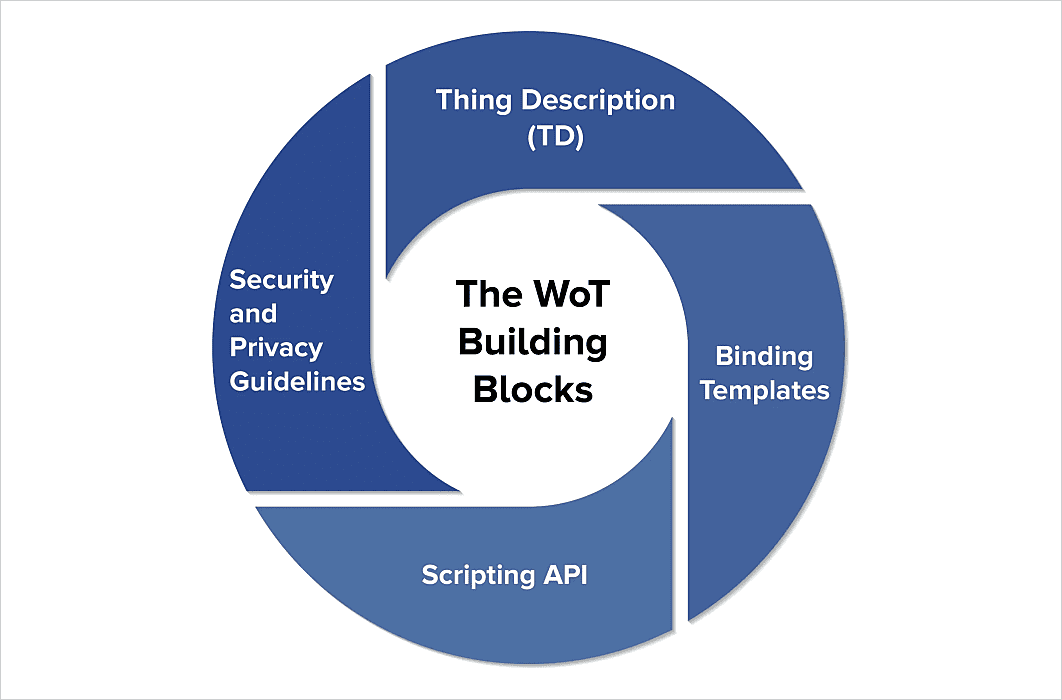
1. Thing Description (TD)
The WoT Thing Description is the most important element of the WoT construction components. A physical or virtual object (Thing) is described in a Thing Description. It establishes a semantic vocabulary- and JSON-based serialization-based information model for a Thing. Like an index.html page for a website, TD can be considered the primary entry point for a Thing. By offering metadata about a Thing that is both machine and human-accessible (and intelligible), such as a title, ID, descriptions, etc.,
TDs promote interoperability. A Thing Description also outlines all of a Thing's actions, events, and properties, as well as the security measures that can be used to access them. To assure compatibility, TD is quite adaptable. It defines a technique to enhance the functionality and the default functionality.
2. Binding Templates
IoT interacts with Things via a wide range of protocols because there isn't a single protocol that works in every situation. So, managing multiple protocols and contact techniques is one of the Web of Things' biggest issues. The Binding Templates are used to address this issue. WoT Binding Templates offer a selection of communication metadata blueprints to support various IoT systems. A Binding Template can be used in any Thing Description once built.
3. Scripting API
A Web of Things construction block that is optional is the WoT Scripting API. Similar to how web browsers provide an API for web apps, it facilitates the development of IoT applications by offering an ECMAScript-based application API.
Scripting API addresses the variety of IoT systems by providing a universal application runtime system. Additionally, it makes it possible to create reusable scripts to implement the device logic, greatly enhancing the portability of the application modules.
The Eclipse Thingweb project's node-wot open-source project serves as the current reference implementation of the WoT scripting API.
4. Security and Privacy Guidelines
Security is important to every component of the WoT architecture. Each WoT building block's specifications consider several factors relating to that block's security and privacy. Specific aspects, such as the separation of concerns in the architecture of the Scripting API and public metadata in Thing Descriptions, explicitly assist security. A specification called WoT Security and Privacy Guidelines is also available, and it guides several security and privacy-related issues.
Exploring The Web of Things Architecture
Only the OSI layer architecture can arrange all Internet protocols and standards. The WoT architecture makes an effort to organize a vast array of protocols. A handy Web of Things architecture for connecting any object or gadget to the Internet has been created using web tools.

Although the WoT architecture stack does not include layers in the literal sense, layers do bring further capability, as the following graphic illustrates. Each layer makes these devices more approachable to software and people while enabling WoT to be incorporated even more deeply!
1. Layer 1: Access
This layer uses HTTP requests to transform any object into a web object, just like any other reserve on the Mesh. In other words, a WoT is a REST API that permits real-world activities like opening a door or reading a temperature sensor wherever it may be on the planet.
Put this in your browser right now. With links to the sensors, you will have an accessible HTML rendering. You may find the temperature by clicking on "temperature." You are currently viewing our Pi's RESTful API, much like you would a website.
This is fantastic, but many IoT applications are time-sensitive and event-based. You want to be alerted when anything occurs in the real world, not when your app repeatedly requests data from our Pi. For instance, noise is heard at night when the humidity reaches a specific level. WebSocket, another web protocol, can be useful in this situation.
2. Layer 2: Research
Although it's nice that programs can report on objects that can be accessed via HTTP and the WebSocket API, this does not indicate that they can actually "understand" what the thing is, what data or services it provides, etc.
This is the intriguing part of the second layer: research. This layer ensures that other HTTP clients can also use your Thing. However, other WoT programs may also be able to find and use it automatically. Here, the strategy is to describe objects and their services by reusing semantic Web standards.
You can use this to look for stuff on other websites' indexes and search engines. automatic creation of user interfaces or connecting tools. At this level, JSON is semantically annotated using a language using technologies like JSON-LD. The Web Things Model and the W3C WoT group's work can also be used to define an abstract set of REST resources that Things should provide.
3. Layer 3: Share
Only if items can securely share data between departments will the Internet of items succeed. This is the responsibility of the Share layer, which outlines the effective and secure sharing of data generated by Things on the Website. Another set of web protocols is helpful at this level.
Let's start with TLS, the protocol that secures website transactions. After that, methods like delegate web authentication systems like OAuth can be included in our Things APIs. Finally, we can establish a social network of things by dividing up items and their resources using social networks!
4. Layer 4: Compose
Once the objects are on the Web (Layer 1), where people and machines can find them (Layer 2), they can then safely share their resources with others (Layer 3). It's time to learn how to create expansive, significant, scaled World of Warcraft apps. In other words, we must understand how to combine diverse object data. and services into a vast ecosystem of web technologies, such as mashup platforms and analytics software.
Web toolkits (like JavaScript SDKs that give top-level abstractions) and panels with programmable widgets are examples of composition-layer web tools. Then, there are actual mashup technologies like Node-RED, as demonstrated here. Physical mashups offer a united perspective of the traditional
Website and the object by drawing inspiration from participatory online 2.0 services, particularly online mashups. and make it possible for users to build apps using data and web object services without having any programming experience.
Use Cases And Applications Of Web of Things (WoT)

The capacity of the Web of Things (WoT) to improve the interoperability and accessibility of IoT devices using web technologies has led to a wide variety of use cases and applications across numerous domains. According to McKinsey, by 2030, factories and human health will contribute 36% to 40% of the estimated unlocked value.
Following are thorough descriptions of some significant WoT use cases and applications:
| Applications & Sectors | Use cases |
| Smart Homes and Home Automation | WoT makes it possible to remotely operate and monitor numerous IoT devices in smart homes using web interfaces, mobile devices, or voice assistants. Improvements to security and energy efficiency are also included. |
| Healthcare and Telemedicine | Healthcare workers can access real-time patient data through WoT through wearables, medical device integration, and remote patient monitoring, which is very useful for telemedicine applications. |
| Industrial IoT (IIoT) | Industries use WoT to improve process optimization, equipment monitoring, and safety. Internet-connected IoT sensors and factory equipment are used for data analytics, proactive maintenance, and real-time equipment control, which lowers costs and boosts productivity. |
| Smart Agriculture | WoT oversees irrigation systems, keeps an eye on the state of the soil, and engages in precision farming. IoT devices make data available online, assisting farmers in resource conservation and data-driven agricultural management. |
| Smart Cities | IoT-based smart city programs use sensors to monitor parking, traffic, air quality, and trash management to improve urban living. These data are accessible through web interfaces, so knowledgeable decisions about waste management, pollution control, and traffic optimization can be made. |
| Environmental Monitoring | By keeping an eye on the weather, the quality of the water, and the preservation of animals, WoT supports environmental applications. Remote sensors and cameras provide online access to real-time environmental data for disaster preparedness and ecosystem preservation. |
| Supply Chain & Logistics | WoT architecture and framework increase the efficiency and transparency of the supply chain. IoT devices that follow WoT standards monitor the location and condition of items across the supply chain. This data is exchanged through web platforms, which enhances inventory management, lowers losses, and guarantees on-time delivery. |
| Retail and Customer Experience | Retailers use WoT to enhance the shopping experience. Customers receive personalized offers and product details via their mobile devices from IoT-enabled items like beacons and smart shelves, increasing engagement and happiness during purchasing. |
1. Smart Homes and Home Automation:
By connecting and managing several IoT devices, including thermostats, lighting, security cameras, and appliances, WoT plays a crucial part in smart homes. Users can control and monitor their homes remotely by interacting with these devices using web interfaces, mobile devices, or voice assistants. For example, a homeowner can improve energy efficiency and security by using a smartphone app to change the thermostat settings or see security camera feeds.
2. Healthcare and Telemedicine
WoT makes wearables, medical equipment integration, and remote patient monitoring possible in the healthcare industry. Healthcare workers have safe online access to real-time patient data, enabling proactive healthcare actions. Using information from IoT-connected medical devices is especially helpful for telemedicine applications, which allow doctors to diagnose and treat patients from a distance.
3. Industrial IoT (IIoT)
Industries utilize WoT to enhance safety, monitor equipment, and optimize procedures. IoT sensors and devices can be linked to the internet in factories, enabling data analytics, predictive maintenance, and real-time monitoring and control of equipment. As a result, maintenance expenses are kept to a minimum, and operational efficiency is increased. The right IOT App Development companies can ensure you proper framework, architecture, and success in the long run.
4. Smart Agriculture
WoT manages irrigation systems, monitors soil conditions, and practices precision farming. IoT devices provide Internet-accessible data like soil sensors and drones. Data-driven decisions about crop management and resource allocation can help farmers increase yields and conserve resources.
5. Smart Cities
Smart city initiatives use the Internet of Things to improve urban life. IoT sensors are dispersed across the city to track trash management, parking, traffic, and air quality. Through web interfaces, this information is made accessible, assisting city planners in making educated decisions for waste management, pollution control, and traffic optimization, ultimately enhancing the quality of life for locals.
6. Environmental Monitoring
Environmental applications, including monitoring climate conditions, water quality, and wildlife conservation greatly benefit from WoT. Sensors and cameras in outlying locations provide real-time environmental data and are accessible online. Researchers and environmentalists can analyze this information to help plan for disasters and preserve ecosystems.
7. Supply Chain and Logistics
WoT improves the efficiency and transparency of supply networks. The location and condition of items can be tracked throughout the supply chain using IoT devices that adhere to WoT standards. Through web-based platforms, this information may be distributed across interested parties, enhancing inventory management, lowering losses, and guaranteeing on-time delivery.
8. Retail and Customer Experience
Retailers use WoT to enhance the shopping experience. Customers can access customized offers and product information through their cell phones from IoT-enabled products like beacons and smart shelves. As a result, customers are more engaged and satisfied during their buying experience because it is seamless and participatory.
WoT simplifies device administration, data access, and interaction in each use case, making IoT technology more available and useful for individuals and enterprises across various applications.
ALSO READ: The Future is Now: 5G and Beyond
Looking Into The Difference Between IoT And WoT
When viewed from a distance, the functions of IoT and WoT are very similar. To connect smart devices to the internet is their goal. There are a few small changes on paper, but they have a big impact when you understand their crucial significance.
When attempting to explain their variances, it becomes clear that while each serves the same function, there are disparities in how they are implemented.
The Internet of Things is the tool for a dish when compared to cooking. What is placed into it or the outcome has no impact on it. It is simply acting as a vehicle to mix the ingredients, which is all it is there to do. Although it links all the components, it does not guarantee whether the final product will be sweet or sour.
In contrast, the other components of the recipe—such as the ingredients, spices, herbs, and stove—make up the web of things. The web of things is formed when everything comes together.

We'll go into great detail about how IoT vs WoT differ here.
| Aspect | IoT | WoT |
| Communication Protocols | Uses specialized M2M protocols like MQTT and CoAP | Leverages web standards like HTTP and RESTful APIs |
| Interoperability | Varied interoperability standards; devices often use proprietary protocols | Prioritizes interoperability with standardized web technologies |
| Accessibility | Requires specialized apps or interfaces for device control | Offers accessibility through web browsers and standard web interfaces |
| Security | Device-specific security mechanisms; security varies by protocol | Adopts well-established web security standards for enhanced security |
| Device Integration | May require custom middleware or gateways | Embeds web technologies directly in devices for easier integration |
| Development Ecosystem | Utilizes specialized IoT development tools and platform | Opens IoT development to web developers, leveraging familiar tools |
| Scalability | Scaling can be complex as the number of devices increases | Benefits from web scalability principles, simplifying device management |
| Use Cases | Applies to a wide range of industries and domains | Well-suited for applications emphasizing web accessibility and user-friendliness |
1. Communication Protocols
Several protocols, including MQTT, CoAP, and proprietary ones created especially for machine-to-machine (M2M) communication, are used by IoT devices to communicate. These protocols provide effective data transmission because they are designed for devices with limited resources. WoT integration, on the other hand, uses web-based standards like HTTP and RESTful APIs. It uses already-existing web technologies to improve interoperability, make IoT devices web-accessible, and make integration with online applications less complicated.
2. Interoperability
IoT devices frequently don't have standardized interoperability protocols. It can be difficult to guarantee that devices from different manufacturers can function properly because they may employ other communication protocols. Contrarily, WoT encourages interoperability through the use of web standards. This makes it possible for IoT devices to interact more uniformly, fostering compatibility and facilitating integration across many platforms.
3. Accessibility
Accessing and managing IoT devices can be difficult for users, who frequently need specialist apps or interfaces. By allowing users to access devices through web browsers and common web interfaces, WoT improves accessibility. This makes it simpler for people to control and monitor their IoT devices because consumers may engage with IoT devices through accustomed web-based tools.
4. Security
Both IoT and WoT are highly concerned with security. Security measures in the Internet of Things (IoT) are frequently device- and protocol-specific. WoT uses tried-and-true web security procedures, taking advantage of years of research and improvement in web security standards. This helps secure IoT devices and the data they produce more reliably and consistently. Even the hotel and food industry is getting innumerable benefits from the IoT advancement. This is one of the reasons that businesses are keen to learn how IoT can boost your food and restaurant business.
5. Device Integration
Device integration may become more challenging if IoT devices need specialized middleware or gateways to interface with other devices or connect to the internet. WoT makes device integration easier by directly integrating web technologies into IoT devices, increasing accessibility and eliminating the requirement for specialist middlemen.
6. Development Ecosystem
Specialized IoT platforms and tools are frequently used in IoT development. WoT makes IoT development accessible to a larger community of web developers by leveraging web technologies. Because of this integration, developing IoT applications can be done in a more comfortable setting, which shortens the learning curve.
7. Scalability
As the number of connected devices rises, IoT systems may become complex and difficult to scale. Because WoT uses web scalability principles, it is simpler to handle huge numbers of devices and scale IoT applications effectively as needed.
8. Use Cases
"IoT" is more general and includes several applications in sectors like healthcare, industrial automation, and agriculture. WoT is relevant to these fields as well, although it is most suited for consumer-facing IoT applications and smart home applications where online accessibility, interoperability, and user-friendliness are essential.
The Future Of The Web Of Things (WoT): What’s There To Come
The Web of Things (WoT) has a promising future as technology advances and expands. The following developments and trends will likely impact World of Warcraft:
Increased Standardization Across Industries and Domains
Increased uniformity is predicted for World of Warcraft in the future. As more companies and developers adopt WoT's web-based approach to IoT, it will take over as the de facto standard for IoT development. As a result of widespread adoption, the IoT ecosystem will become more standard and compatible.
| Possibility | Aspect To Learn |
| Interoperability | Smooth device communication may be made possible by the standardized WoT, promoting device and industry interoperability. This would enable devices from many manufacturers to work together, improving user efficiency. |
| Scalability | Standardization makes Scalable WoT implementations possible by supporting the increasing number of linked devices. This makes Large-scale IoT deployments, such as those for smart cities and industrial uses, likely. |
| Enhanced Security | Future WoT standards may integrate advanced security mechanisms, removing weaknesses and guaranteeing the security of sensitive data transmitted over the internet. |
| Simplified Development | Developers may design WoT applications more easily and fast with standardized protocols and APIs. This might trigger a rise in creative WoT services and applications. |
| Global Adoption | Increased standardization can promote WoT's adoption worldwide, easing business expansion into foreign markets and enabling connections with a wider spectrum of customers. |
| Cross-Industry Synergy | WoT can promote industry collaboration as standardization spreads. For instance, data from the automotive and healthcare industries might be safely shared to enhance telemedicine and connected vehicle experiences. |
1. Enhanced Security
Security issues will intensify as IoT devices are incorporated into daily life. Enhancing IoT security will receive much attention from WoT in the future, using the developed web security standards. This includes identity management, stronger encryption, and improved techniques for protecting IoT devices and data.
2. Edge and Fog Computing
In the future of World of Warcraft, edge and fog computing is expected to be important. These computing paradigms will reduce latency and enhance real-time decision-making by bringing processing and data analytics closer to the source of IoT data. To accommodate these distributed computing architectures, WoT frameworks will need to be modified.
3. Integration of AI and Machine Learning
Incorporating AI and machine learning into WoT will make more intelligent and predictive IoT applications possible. WoT systems will use AI algorithms to analyze data from IoT devices, automate procedures, and offer insightful information. IoT solutions will become more autonomous and data-driven as a result.
4. Low-Latency Networks with 5G
The rollout of 5G networks will provide extremely low latency and large bandwidth, creating new opportunities for WoT applications. WoT devices can communicate and transfer data more effectively with quicker and more dependable connections, providing real-time control and richer IoT experiences.
5. Greater Cross-Domain Integration
WoT will facilitate cross-domain integration so that various applications can share and use IoT data. Smart cities, for instance, can combine environmental monitoring data with data from transportation systems to make more comprehensive decisions. The utility and value of WoT will be improved overall because of this interconnection. Companies should also learn how technology can help you manage compliance better.
6. Energy Efficiency and Sustainability
Energy Efficiency and Sustainability will be Priorities in the Future of WoT. Their power consumption must be minimal to make IoT devices more environmentally friendly. WoT can also be used for sustainability and energy management projects like smart grid technology and green building techniques.
7. Consumer-Centric Applications
WoT will give users more influence over their IoT devices. People can adapt their settings and experiences to their preferences and requirements as smart homes and personalized IoT experiences become more commonplace.
8. Privacy and Data Ownership
In the future, handling privacy issues and data ownership in World of Warcraft will be more crucial than ever. To ensure the proper and moral use of IoT data, efforts will be taken to develop clear norms and standards for data protection and user permission.
9. Cross-Device Orchestration
WoT will make orchestrating various IoT devices to operate in unison easier. For instance, a future smart home might include gadgets that work together to improve convenience, security, and energy use depending on user preferences and real-time data.
ALSO READ Top 10 Internet Of Things Technology Trends Prediction for 2023 by Gartner
Unlocking Tomorrow's Potential: The Web of Things (WoT)
We all are aware of how are mobile app development companies impacting IT industry in 2023, and there is no doubt that it’s not going to stop. In the ever-expanding universe of technology, the Web of Things (WoT) emerges as a fascinating concept, fusing the tangible world of physical objects with the boundless potential of the Internet.
WoT empowers everyday devices to speak the web language, transforming ordinary items into intelligent, web-accessible entities. It invites us to ponder: what if our homes, cars, and cities were not just 'smart' but interconnected, user-friendly, and seamlessly accessible through web interfaces?
WoT transcends IoT by supporting web standards, paving the way for a time when interoperability, accessibility, and security will be the pillars of our digital existence.
WoT makes us wonder what new frontiers lie ahead as we move toward a more interconnected world: what possibilities will open once our world, and even our thoughts, are intricately entwined with this web of things? How will it influence how we interact with technology in the future to improve the practicality and effectiveness of our lives? Are you ready for a future in which the internet and the real world merge? That is the intriguing question posed by the Web of Things, which invites us to explore the immense potential of a world where everything is web-connected.
With the increasing demand for the Web of Things (WoT), several companies are pushing themselves to be at the top of the directories. Are you also thinking to showcase your company? Then, get yourself on the list of top companies like top mobile app development companies today.
Frequently Asked Questions
-
What is the main difference between the Internet of Things (IoT) and the Web of Things (WoT)?
The key distinction lies in their communication and interaction paradigms. IoT focuses on connecting devices and sensors to the internet, whereas WoT extends this by emphasizing a standardized, web-centric approach. WoT leverages web technologies and protocols, making crossing and controlling devices over the internet easier.
-
How does the Web of Things ensure security for connected devices?
-
What role does the WoT play in Smart Cities?
-
How does the WoT contribute to environmental sustainability?
-
What challenges does the Web of Things face regarding standardization?
-
What is the main purpose of WoT in the IoT?










